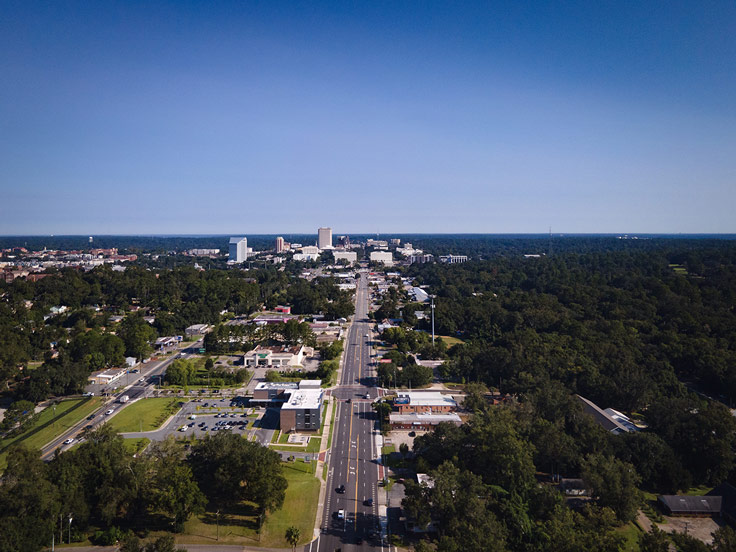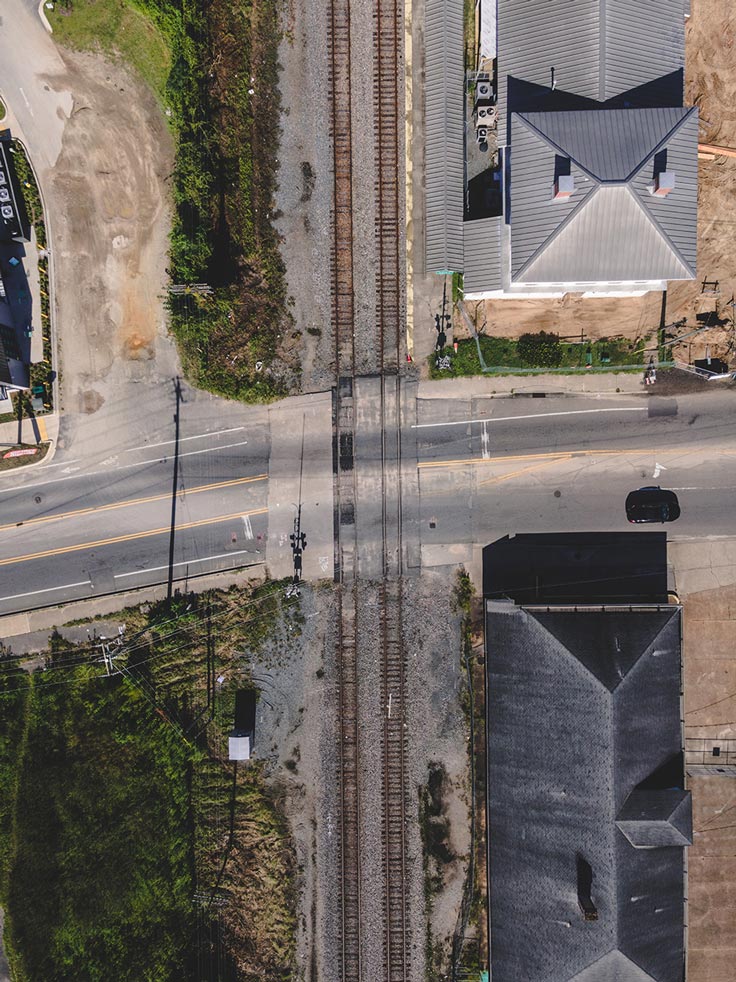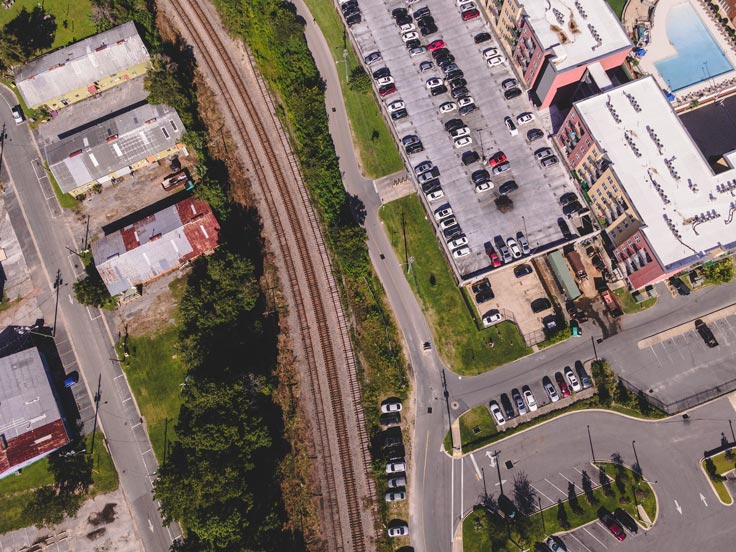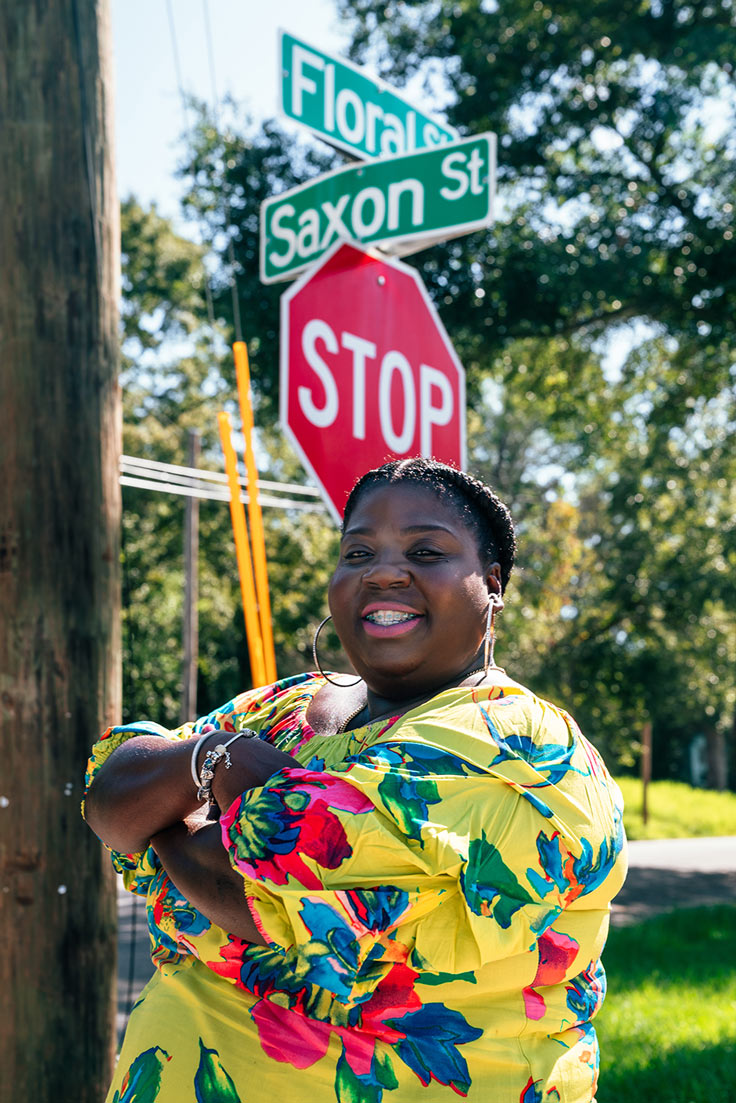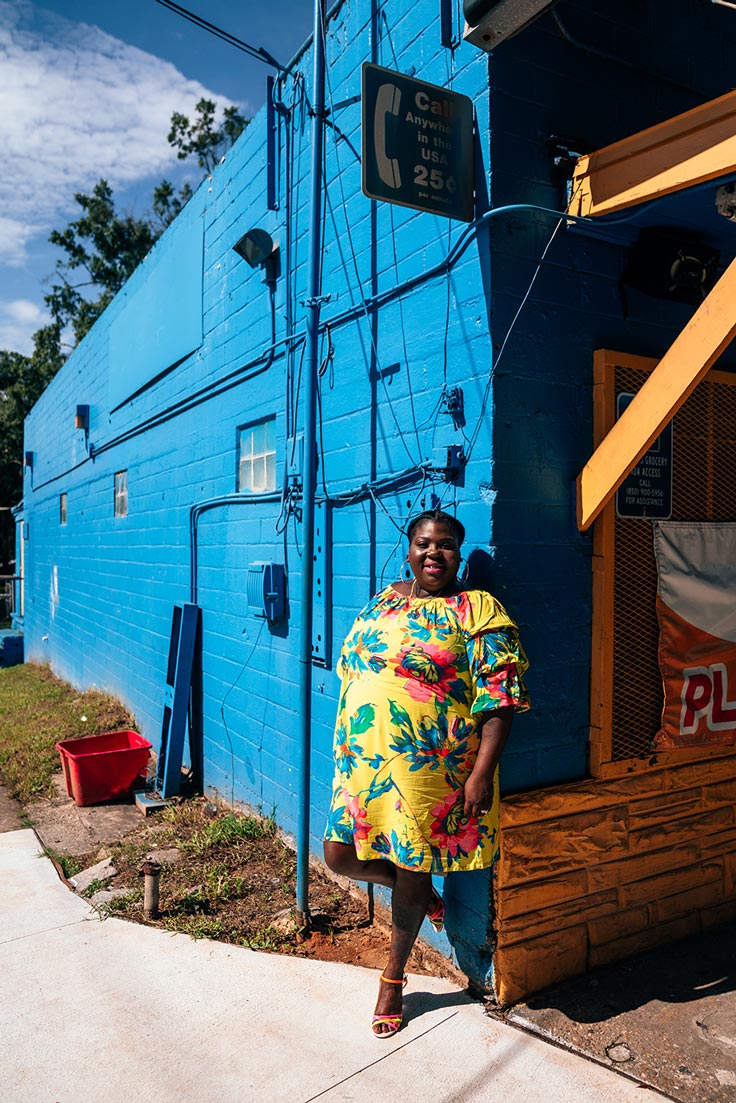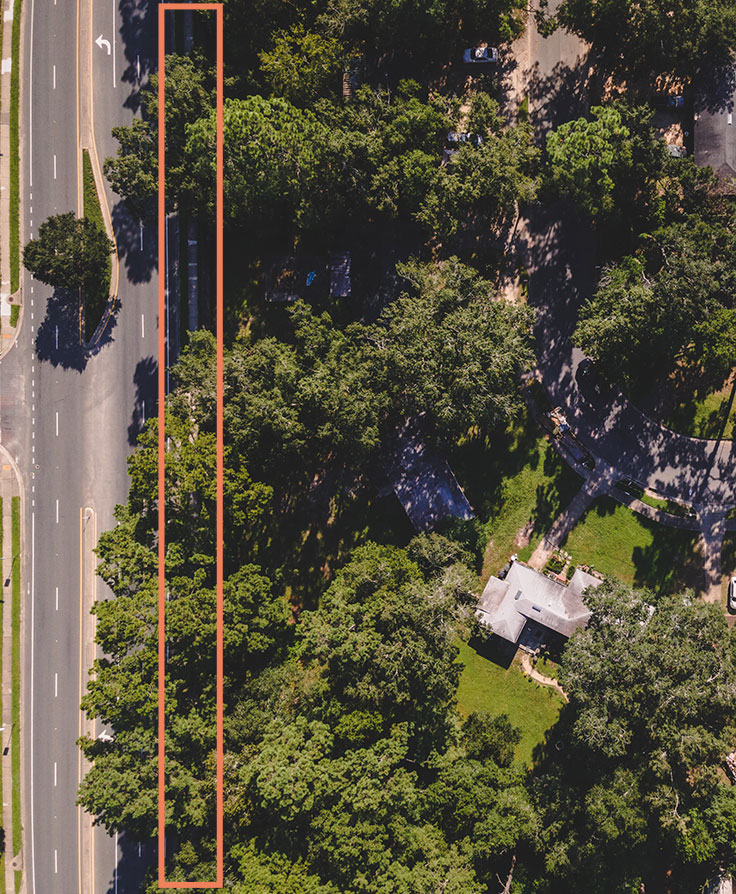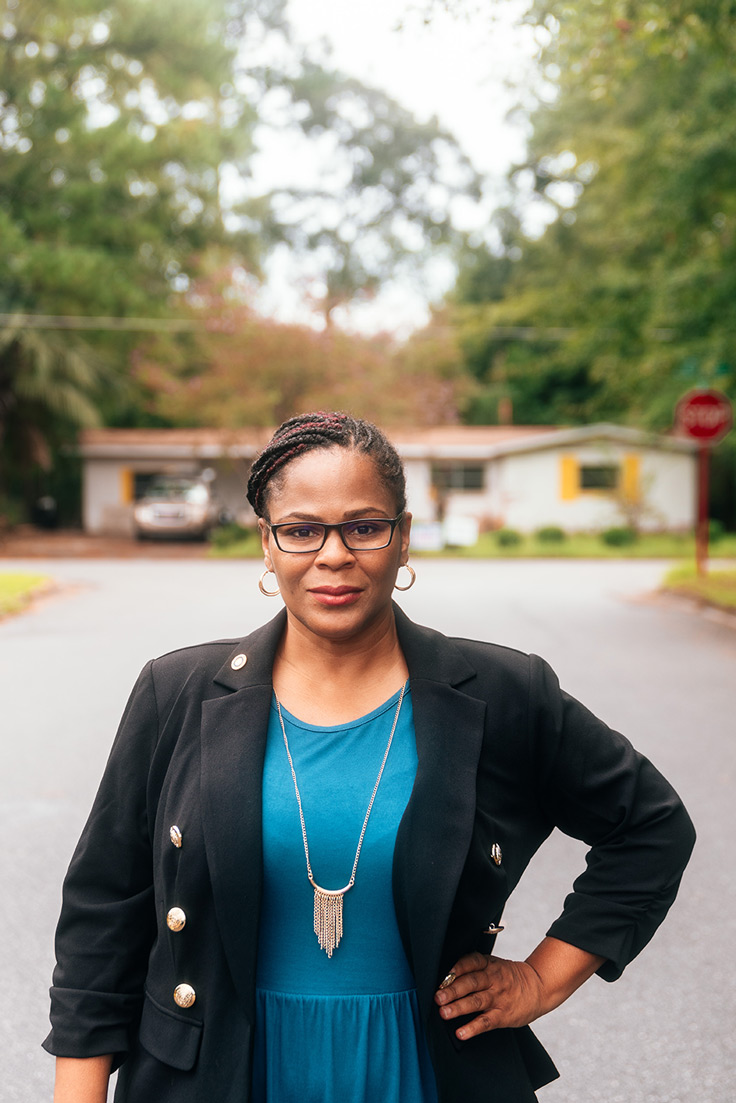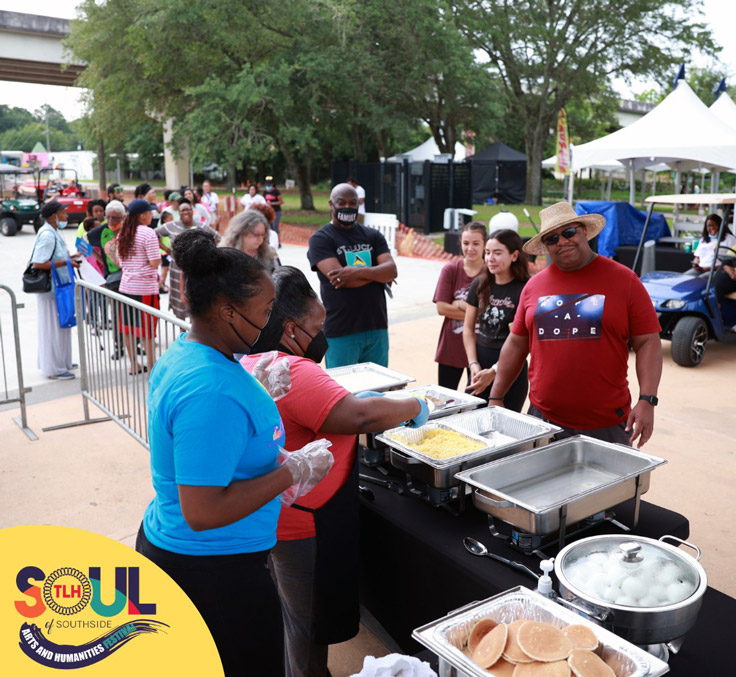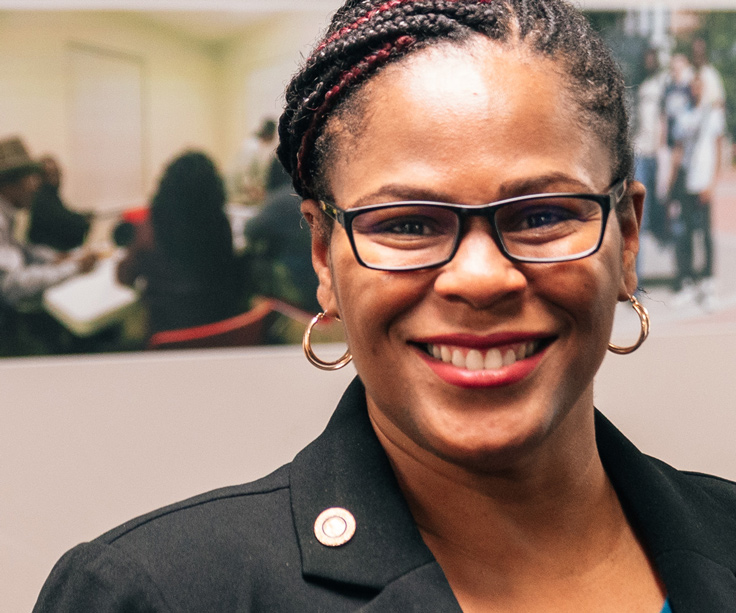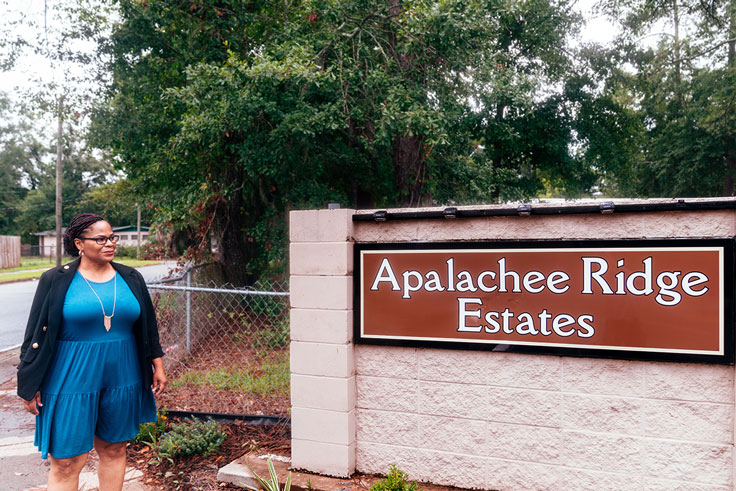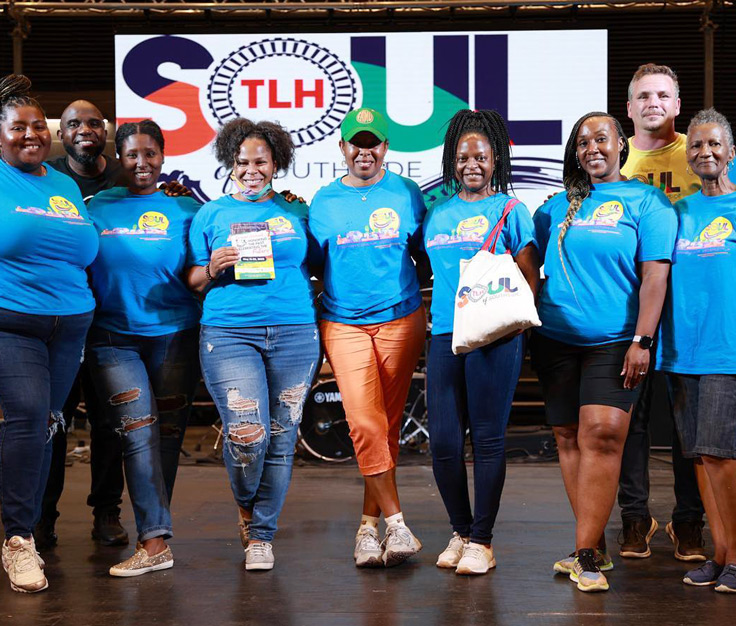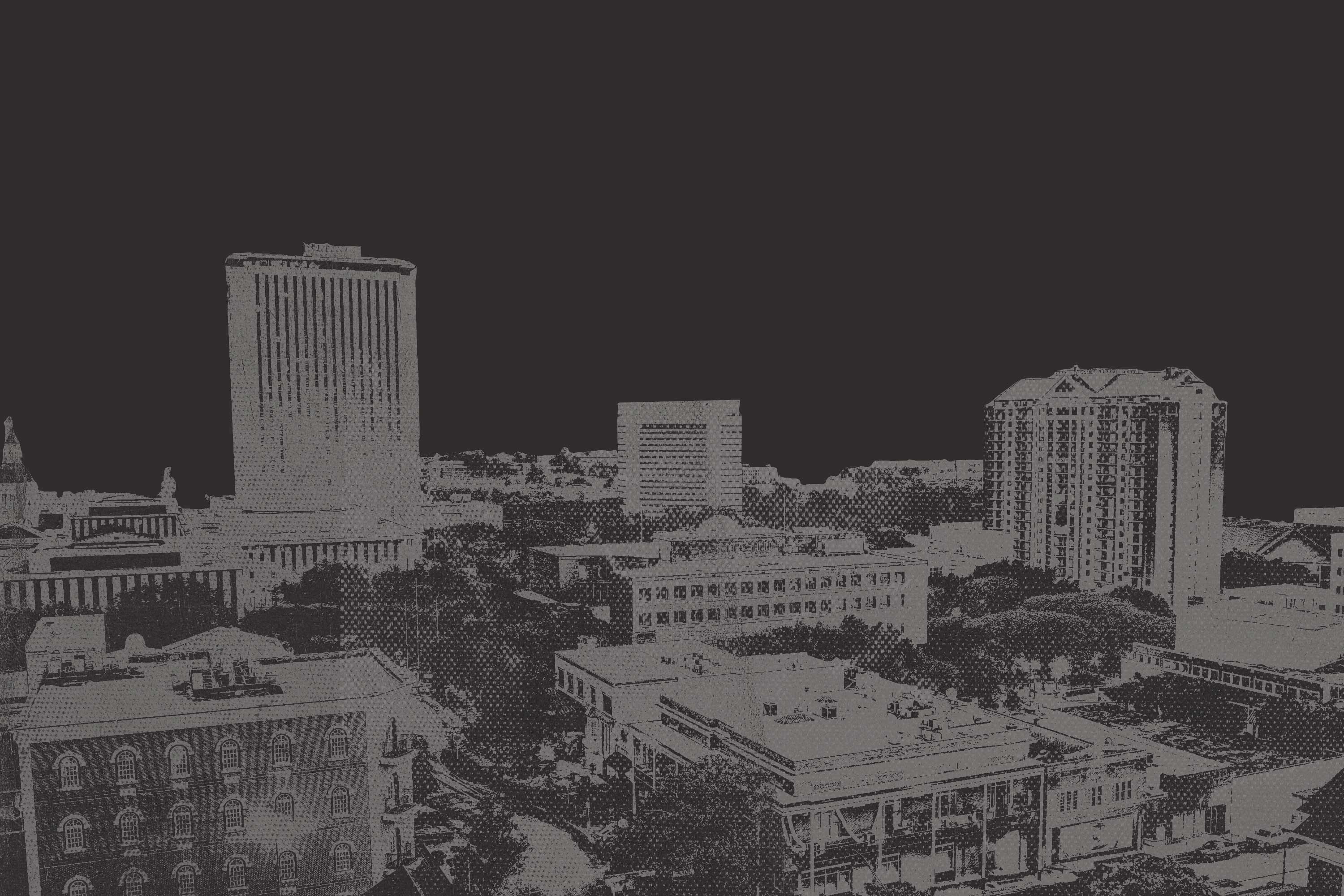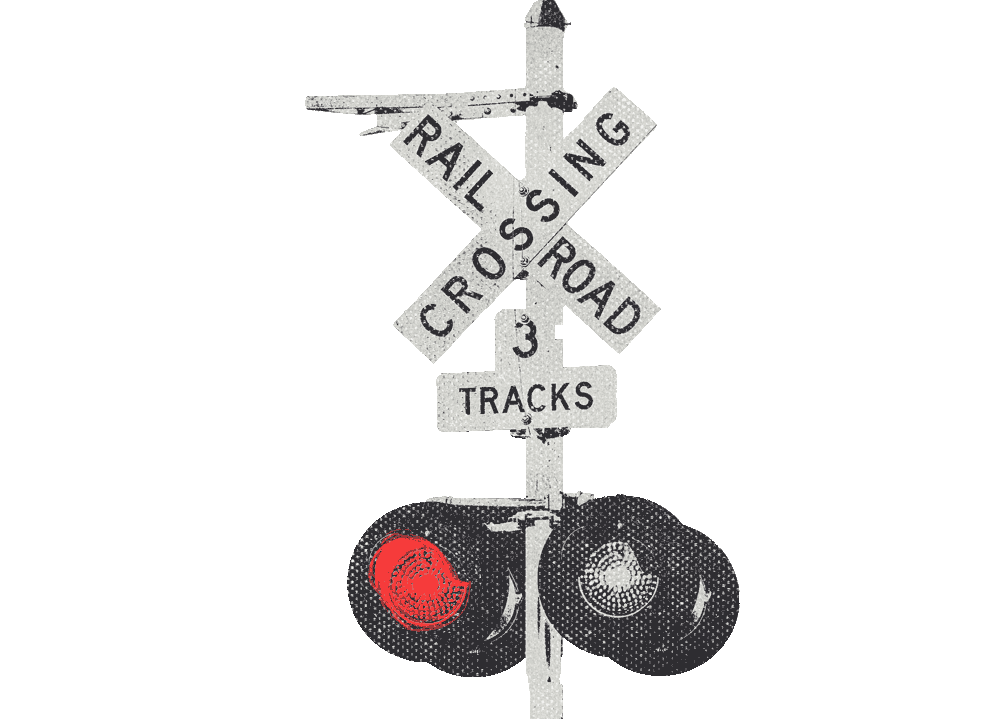
Neighbors watching over Tallahassee's Southside are working to erase the dividing line
The railroad tracks have traditionally been the dividing line between the haves and the have-nots. However, numerous efforts are underway to reinvent Tallahassee's Southside.
Subscribe now
Episode 1 by Gina Jordan, WFSU Morning Edition Host
Edited by Lynn Hatter & Patricia Moynihan
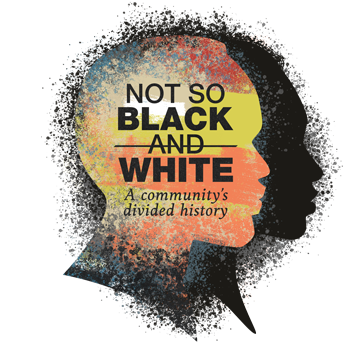
Listen to the complete episode below. Subscribe now (by choosing your preferred platform) to be notified of upcoming episodes in this series. The text article below is abbreviated and may not include everything in the audio portion.
I n the shadows of a busy corridor bustling with hotels, storefront facades, landscaping, and college students are railroad tracks. This corridor is Gaines Street, close to Tallahassee’s downtown. The nearby railroad tracks divide the predominately white Florida State University and the historically Black Florida A&M University. The campuses reside about a mile and a half apart, across the tracks.
Poet and author Cynthia Rose noted the differences ‘across the tracks’ in her poem Summer in My Capital City.
Breezy evening walks,
shady trees and talks.
Neighbors watch the block.
Here comes another cop.
Sirens howling near.
My dog joins in song
as I urge her gently along
these somewhat neglected streets.
Mary Jane said hello
in her high mellow tone.
I wave on by, and Crystal is still on her phone.
Summer on The Southside is quite a different tone
than that of pretty gardens found in northeast homes.
“It's literally a dividing line between Black and white, between the haves and the have-nots, visually. And although Tallahassee is revitalizing the areas around the railroad tracks, when I see the railroad tracks, I literally think of the divide of the races,” said Rose in an interview.
But there are efforts underway to change that image.
This story is about how Tallahassee’s Southside is working to reinvent itself—while trying to preserve its history, make room for newcomers, and maintain its sense of community.
The Great Divide
South of the railroad tracks that run through downtown Tallahassee is the predominantly Black area known as South City, or more broadly The Southside. Yet, this area hasn’t always been predominately Black—and the invisible lines that divide neighborhoods from each other in this area of town have shifted over time, shares Soul of Southside Festival volunteer and organizer Rachel Basan Porter. She provides an example of two neighborhoods, Apalachee Ridge and Orange Avenue Apartments, which are directly across from each other near the intersection of Orange Avenue and South Monroe Street.
“We interviewed 21 elders from the community, Southside communities,” Porter said, referring to a recent oral history project, “and one from Apalachee Ridge, in particular, stood out when he talked about the wall of Apalachee Ridge. It was a physical barrier that said, ‘don't come in’ to the folks on the other side. So Apalachee Ridge was the white community, South City was the Black community. [And] it did not provide an inviting environment.”
Historically, Orange Avenue Apartments was a complex for low-income, mostly Black residents. It’s in the process of being demolished now. When it is rebuilt, it will be designated as mixed-income—and not everyone who was forced to leave will be able to go back.
Porter spoke with us in May during a Soul of The Southside Festival event in Cascades Park. She said the festival is designed to celebrate the Black community and share its stories.
“Leave your preconceived notions at the door completely. We're at the crossroads, right?” she said, gesturing to the ground and the overpass that marks Lake Anita Plaza on Bronough Street. “This liminal space is neutral ground. Come out, meet with your neighbors. If you live in the north and you have never met a friend from The Southside, come visit.”
The area has started drawing more visitors, in addition to newer residents like Cynthia Rose, whose time in Tallahassee has sent her to both sides of the railroad tracks. When Rose moved to Tallahassee in 2008, she lived on the northeast side, near Killearn Estates. Over the next 8 years, she moved away, then back, got a divorce, and lost her home. So, in 2016, Rose moved to The Southside where she could afford the rent and walk to her job at FAMU.
“One of the first things I noticed was availability of food, places to shop for groceries,” she said, describing her initial impressions of The Southside area.
in this episode: featured song
- TaReef KnockOut, "Small Town"
- Watch the Official Video
“And I was like, what? There is no Publix, and…they had opened a huge one on the northeast side of town that even had a culinary school on the second level, and I went to the grand opening, and I was like, oh, this is five minutes from my townhome. Great! Then I moved to The Southside and there's not a Publix in sight. And so that was the first thing I noticed was…wow. There's disparity here. The second thing I noticed was response time by the police when you call them.”
Rose said police responded faster to teenagers breaking into cars in Killearn than to multiple calls when a friend had thousands of dollars’ worth of camera equipment stolen from his car in her neighborhood—across the tracks. The difference wasn’t what she was expecting when she first moved to the city.
“When I moved to Tallahassee, I thought, I'm going to be in the capital city. It will be progressive. And then I got to Tallahassee, I was like, wow, this is like the deep south. I could feel the tension between Black and white— racial divide. I could feel the tension. It wasn't that anyone, like, was overtly racist. But you feel it and you see it in how people look at you, or look at your child, or how people act around each other. And then you see it with the services that are provided on one side of the tracks versus the other side of the tracks. And then you know FSU, although it's multicultural, it is predominantly white. And FAMU is historically Black. And you have them on opposite sides of the tracks. It's like whoa. So yeah, it's a visual representation of history.”
Wrong Side of the Tracks
“The wrong side of the tracks, that phrase or idiom has been used to denote that danger or something uncommon is on the other side of the tracks. Right?” asks local grassroots organizer Talethia Edwards. “You hear people use it a lot. And so, I think that…those kinds of the terms are divisive and so we shouldn't use them.”
Edwards is president and founder of the Greater Bond Neighborhood Association. She’s also the Title One advisory committee chair for the Leon County school district. Title One is a federal program that provides additional resources to schools with high numbers of low-income students and families. In her role, Edwards sees systemic barriers to access and opportunities; location is among the biggest barriers.
“When I talk about internalized identities, I see it from a point that my mother has been here, my grandmother has been here, and maybe there's no way out for myself… And so, when we study the achievement gap, we realized that if you put children from different sides of a neighborhood or community and different economic groups together, diverse backgrounds and ethnicities, they do better because it’s exposure,” she said.
“We have children who live not even four miles from here that have not been to Governor’s Square Mall. We have children who've never eaten at Momo’s and seen the pizza bigger than the size of your head, you know? When you think about a child who stays in a one-mile radius—they go to school there, their parents live there, they go to church there, they don't have access to transportation—these things become limiting; the mindsets are limiting. And it gets hard to actually imagine and think outside of the box.”
How Where We Live Influences What We Have
A drive around Tallahassee shows evidence of the city’s segregation.
“Start at Capital Circle on the far south side and go all the way northeast. You can definitely see the difference. You can see the lighting is changed, the trash, [and] the roads are paved different.”
It’s something that bothers Edwards.
What divides us is ourselves. How do we understand the trauma and the pain and the things that are holding African American people back?...We can only do that through conversation...
“And I ask myself this question all the time, why is that? Why is this happening and what do we do about it?”
She points to the county’s school system and how it handles gifted education at a school like Gilchrist, which is in the northeast versus Bond Elementary which is on The Southside.
“So, at Gilchrist [Elementary], they have gifted pullouts. We have math, we have English, we have enrichment. [And] at Bond Elementary, they have one hour, once a week, gifted. Somebody somewhere has not made a conscious decision to look at what is equitable across this district and across this community and make things equitable.”
Edwards said the symbolism of the railroad tracks that divide south from north Tallahassee isn’t lost on her.
“What divides us is ourselves. How do we understand the trauma and the pain and the things that are holding African American people back? And how do we understand what privilege gives us access to? We can only do that through conversation, through intentional relationship building, breaking down walls and silos. And stop the resegregation,” she said. “We cannot have a generation that moves past and dispels notions if we keep segregating our kids. They're only going to learn how to be apart. They won't learn how to be together and change this world so that when we're old enough we can smile at it.”
For Dr. Henry Lewis, former dean of the FAMU College of Pharmacy and a former president of Florida Memorial University, another HBCU, the phrase “wrong side of the tracks” carries vestiges of deprivation.
“To me, it means that it was the way the majority community had cast aspersions on certain parts of the city, in order to keep a class of citizens at the lower level. We were deprived of resources that the other side of town had…”
Lewis, now retired, grew up on The Southside. His influence led FAMU to open a pharmacy for medically deprived patients at the Bond Community Clinic. In 1986, he made history by becoming the first Black commissioner elected to the Leon County Commission.
“Tallahassee is no exception, that if you go to the southern part of virtually any major city, that's where the congregation of African Americans and other minorities are always settled. And those parts of the city were the parts that were usually red-lined. As you know, redlining was a condition that the F H A put on banks to say - don't make loans in these particular areas, which kept the property values down and kept the resources down, because property values and resources go hand in hand. The school board, the city, and the county provide resources in proportion to the property values where they get their taxes from. So as a result, those areas begin to degrade because of the lack of resources.”
Property values vary in Tallahassee depending on where you live. A house in a more affluent area with coveted schools can cost tens of thousands of dollars more than an identical house with a bigger yard elsewhere. Take this example, from seven years ago: a house in Camelot Park sold for $283,500. A similar house in Ox Bottom, with a smaller yard but on the north side of Tallahassee, sold for $360,000.
“Why is this one $70,000 more than the same floorplan with a clearly superior yard and location in terms of park vicinity?” questioned local realtor Christie Perkins in a 2015 interview with WFSU.
A Costly Revival
Integration gave more individuals the ability to move. And now, many of them are, by choice, returning to those places they left, alongside new arrivals. That’s creating new tensions. There’s a renaissance of sorts emerging on The Southside. Businesses like breweries and restaurants are investing in the area, and more people are crossing the tracks to enjoy them.
“You start to see a different group that's building a different sense of community on that side of the tracks that historically young white people were afraid of, right?” said Dr. Reginald Ellis, a history professor and Assistant Dean of the School of Graduate Studies and Research at Florida A&M University. “I know individuals in my age group that said that they had never been to FAMU because they were told not to come to FAMU, right, because it was the bad side of town,”.
in this episode: featured songs
- FAMU Marching 100, "Say La La" and "Fantastic Voyage"
- Vist FAMU Marching 100's website
He continued, “And now it appears that perhaps it's a lucrative side of town where you see individuals walking from Cascades Park going all the way down to Railroad Square, enjoying festivities all times of day and all times of night, which in our lifetime, we would have never imagined that we would see that.”
In April, County Commissioner Bill Proctor was on hand to mark the groundbreaking of a new project, called SoMo Walls. Proctor has long represented The Southside and South City.
“I view this as the first domino to fall. And hopefully, the falling dominoes of redevelopment, revitalization in this South Monroe corridor, will give a whole lot of energy to the area,” he said calling the SoMo Walls project a new beginning for The Southside.
The changes haven’t come without pushback. Residents and businesses worry about how the new development will impact them. Last Spring, tensions flared when local developer Adam Kaye ousted the longtime restaurant Kosta’s from its Southside location. Kaye purchased the building Kosta’s occupied as part of planned redevelopment.
Finding joy in unexpected places
“Inequality, unfairness? Privilege, lack of acceptance? There's a number of things like that that come to my mind,” said local resident Tom Miller when asked what he thinks of when he hears the phrase ‘wrong side of the tracks.’ Miller and his wife have only lived in Tallahassee for a couple of years.
“[I] had a lady say to me last Sunday in church, and I think [it’s] really true, she said it's because we have an inherent humanity of lack of acceptance of people that don't look like us. And I, I never thought about it that way. I never put it in those terms. But I think she's got some insight that we all maybe struggle with. How do I be more accepting? And how do I look at other people with different eyes?”
I fell in love with Tallahassee’s Southside. And it became my community. And that's where my passion is. Love received and love returned, it's the least I can do.
The area has its champions and loyalists like Edwards, Henry, and local realtor Christic Henry—those who’ve made the area home by choice.
“I live on quote ‘the wrong side of the tracks’, and I love it! This is my neighborhood. You know, it's only called wrong because people recognize the wrong that's been done to it!” said Henry, who owns a real estate business and is a big community advocate.
Henry is also an organizer of the Soul of Southside Festival, which is meant to bring people to the area who otherwise would avoid it.
“There's a positive story there because, despite the wrong that was done in the past, folks over here have found a way. They have found a way to care for one another. They found a way to make a way for children to get to FAMU and to graduate with degrees so that the next generation can experience that higher level of attainment that comes with educational attainment. They made a way to be able to buy and afford homes over here. We haven't told the story of this side of town.”
Henry said that’s the purpose of the festival: to help dispel preconceived notions, break stereotypes, and commemorate one of Tallahassee's historically segregated communities.
“Really at the soul of it is reconnecting people here with the value of here. It’s making them remember grandma and what she did. It’s making them remember these churches and these organizations and what they have been for this community…to just stir up those old wells and to start to reinvigorate people in terms of their mindset of the value of Tallahassee's Southside.”
What brings Henry joy is “when other folks from the other side of the tracks come over here and they hear the story, they hear the narratives, they hear the love, and they change their mind[s].”
Her love of South City and The Southside is rooted in a personal tragedy that forced Henry to rethink how she viewed the area. “So, I came to Tallahassee as a student at FSU and again was told not to go across the tracks. My sister died, and I fell into a depression, and I ended up leaving FSU,” she said.
“And when I came back, I found myself in AmeriCorps over at Bond Elementary School. When I went to Bond [Elementary School] and I went to Smith Williams Service Center, and I went to Walker Ford Community Center—for the first time in my life, I experienced Tallahassee. And the folks who I worked with and my mentors in those spaces powerfully impacted my life, powerfully shaped my academic confidence and direction, and powerfully loved me and many others like me. And I fell in love with Tallahassee’s Southside. And it became my community. And that's where my passion is. Love received and love returned, it's the least I can do,” she concluded.
Longtime Southside residents are loyal and they’re striving to preserve community memories and ensure Black residents don’t get erased as they take steps to flip the script about perceptions surrounding the ‘other side of the tracks.’
Brought To You By
the dedicated storytellers at WFSU Public Media
- Lynn Hatter - Lead
- Gina Jordan
- Regan McCarthy
- Valerie Crowder
- Rob Diaz de Villegas
- Tom Flanigan
- Margie Menzel
- Patricia Moynihan - Lead/Website
- Rheannah Wynter - Promo/Graphic Producer
- Lydell Rawls - Social Media
- Daniel Williams - Web Assistant
- Chris Womack - Logo Design
- Erich Martin - Photography
- Suzanne Smith - Lead
- Kim Kelling
Director of Content & Community Partnerships
-
Advisors
- Dr. Reginald Ellis - Florida A&M University
- Dr. Andrea Oliver - Tallahassee Community College
- Dr. Kwasi Densu - Florida A&M University/Florida State University
- Dr. Jamil Drake - Divinity School at Yale University
This project has been funded by a grant from
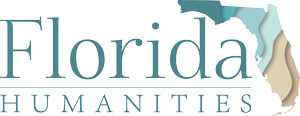
Funding for this program was provided through a grant from Florida Humanities with funds from the National Endowment for the Humanities. Any views, findings, conclusions or recommendations expressed in this podcast do not necessarily represent those of Florida Humanities or the National Endowment for the Humanities.
© 2026 WFSU Public Media. All rights reserved.
